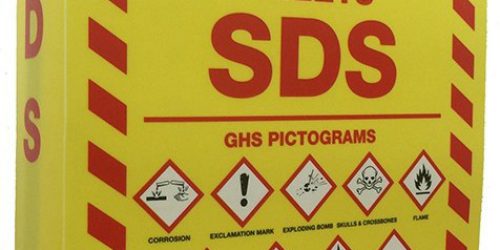
Handling hazardous waste can be dangerous if not managed properly, which is why having a Safety Data Sheet is essential in identifying and differentiating one material from another. Understanding a safety data sheet and the information they contain is a fundamental skill for any person in the vicinity of or handling these materials. By having a thorough comprehension of these data sheets, you’ll be well-equipped to reduce the risk of injury by taking the protective measures needed.
What is a Hazardous Material Safety Data Sheet?
A Safety Data Sheet (SDS) includes important information including the properties and potential hazards of a material. This data will explain how to use the material safely and what steps should be taken if there is an accident or emergency.
SDSs are written for varying audiences, including not only the workers handling the material and their supervisors but also engineers, environmental specialists, safety personnel and supervisors, and more. These guides serve as a starting point for a comprehensive safety plan regarding hazardous material, though they tend to be general in nature and are not considered a complete source of information.
There are 16 sections included in a SDS, but not every section is relevant to each group, meaning the information used by some may not be needed by others.
Sections of a complete SDS include:
- Section 1: Identification
- Section 2: Hazard Identification
- Section 3: Composition and Information on Ingredients
- Section 4: First-Aid Measures
- Section 5: Fire Fighting Measures
- Section 6: Accidental Release Measures
- Section 7: Handling and Storage
- Section 8: Exposure Controls and Personal Protection
- Section 9: Physical and Chemical Properties
- Section 10: Stability and Reactivity
- Section 11: Toxicological Information
- Section 12: Ecological Information
- Section 13: Disposal Considerations
- Section 14: Transport Information
- Section 15: Regulatory Information
- Section 16: Other Information
Tips for Understanding a SDS
1. Look for Specific Information
Formats of each Safety Data Sheet may vary, since the Occupational Safety and Health Administration (OSHA) requires specific information but not the way it’s laid out. That said, each SDS is required to be in English and contain the following:
- Company information
- Material ingredients, specifying hazardous ingredients
- Physical descriptors
- Hazard data such as fire and explosion hazard, health hazard, and reactivity
- Spillage and leakage procedures
- Special precautions and personal protection information
2. Check for Online Availability
Especially in this day and age, many companies have put their SDSs online to give all workers easy access to this important information. Each SDS must be up-to-date within the last 3 years, though disposing of old SDSs can sometimes be an issue if a “harmless” chemical is someday deemed hazardous in the future. Ideally, a company has documentation of every chemical they’ve handled during operations.
3. Be Thorough
All Safety Data Sheets should not only be reviewed by workers prior to handling the material, but familiarized. Match the name of the chemical to the SDS, thoroughly read and understand all information and, when in doubt, ask questions to the proper personnel at your facility. This will help ensure you are prepared in case of an emergency situation.
Contact the Hazardous Waste Experts
MLI Environmental is a leader in hazardous waste disposal and dangerous goods shipping throughout New England. To learn more about our hazardous waste management services, please contact our team today.
